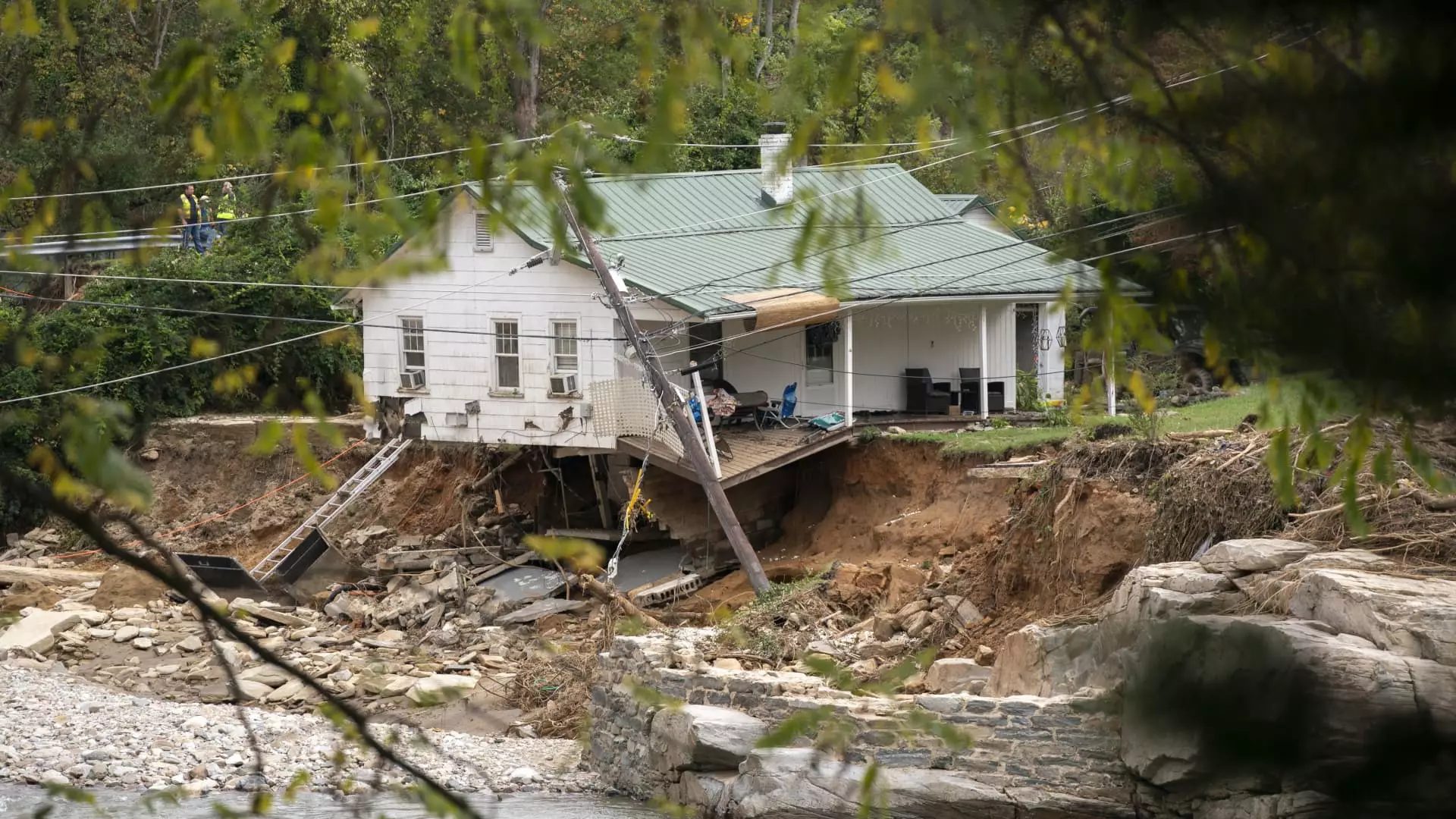Understanding the Impact of Climate Risk on Home Ownership: A New Era of Real Estate Decisions

Hurricane Helene served as a stark reminder of the profound financial toll natural disasters can take. The devastation caused by this hurricane has led to insured losses exceeding $6 billion, but it’s the alarming gap in uninsured losses that demands our immediate attention. North Carolina, particularly hard-hit by Helene, exemplifies the situation where many homeowners lacked flood insurance—leaving them vulnerable in the wake of catastrophic events. While only 4% of homes in North Carolina fall within designated FEMA flood zones, nearly 12% are deemed at risk according to new assessments from climate risk consultancy First Street. This discrepancy highlights a critical flaw in the current risk assessment frameworks, which often fail to account for the broader implications of climate change.
Traditionally, flood insurance in the U.S. has been linked to federal flood zone designations. This model is outdated, as it overlooks the realities faced by many homeowners. First Street’s innovations in risk assessment represent a game-changer in how we gauge climate vulnerability. By integrating climate change factors into property analysis, First Street’s data scrutinizes over 1.5 million properties, revealing that buyers, sellers, and agents now have access to specific climate-related risks when considering real estate investments. According to Zillow’s chief economist, Skylar Olsen, these new risk insights empower stakeholders to make informed decisions that transcend the precision of FEMA flood zones, providing clarity in the murky waters of real estate ownership.
The real estate landscape is undergoing a transformative shift as information surrounding climate risks gains prominence. Homebuyers are increasingly paying attention to climate-related factors in their purchasing decisions; recent surveys indicate that over 80% consider these risks before finalizing a deal. The data from First Street enhances listings on platforms like Zillow, where property-specific climate risk scores are now prominently featured. Homebuyers can review potential risks related to flood, fire, wind, air quality, and heat, as well as considerations of future risk escalation over 15 to 30 years—the lifespan of fixed-rate mortgages. This evolution has provided consumers with unprecedented access to information, allowing them to make more comprehensive assessments about their future investments.
As this new wealth of information permeates the market, we must anticipate significant implications for home values and insurance costs. The incorporation of climate risk metrics means that homes may be subject to fluctuations in value based on their assessed risks. If potential buyers recognize that properties in certain regions face increasing flood risks due to climate change, they may become reluctant to invest, driving down home prices in those areas. Additionally, heightened insurance costs driven by these risks will further impact housing affordability. Ed Kearns from First Street emphasizes that many individuals mistakenly believe they are immune to flooding if their homes fall outside FEMA-designated areas; in reality, rainfall can impact anyone. Enhancements in flood mapping that address these risks empower consumers to better navigate their insurance options.
The modern homebuyer has evolved, demanding not only aesthetic qualities and structural soundness but also a clear picture of potential climate risks. With the evolving landscape of risk assessment, the importance of climate data in real estate negotiations is becoming pronounced. Buyers now rank flood risk as their primary concern, followed closely by the threat of fire, reflecting an awareness that transcends traditional home ownership paradigms. Zillow’s analysis highlights an increase in properties nationwide with significant climate risks compared to five years ago, illustrating a trend that cannot be ignored.
The implications of integrating climate risk assessments into real estate are significant and multidimensional. As the entire framework of home buying evolves, stakeholders must adapt to an environment where climate risks are front and center. It is clear that future home valuations and insurance considerations will heavily rely on data-driven insights that reflect the changing climate landscape. The challenge is not merely to protect property investments but to ensure informed choices that can ultimately enhance community resilience against the growing threats posed by climate change. The dawn of a new era in real estate is upon us, one that emphasizes knowledge, adaptation, and sustainable practices in the face of undeniable climate realities.





